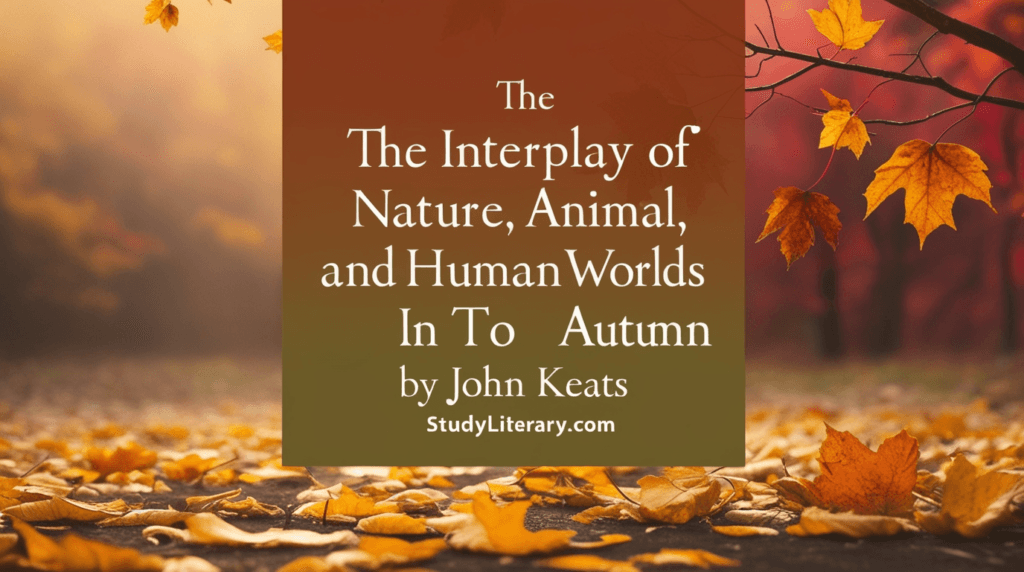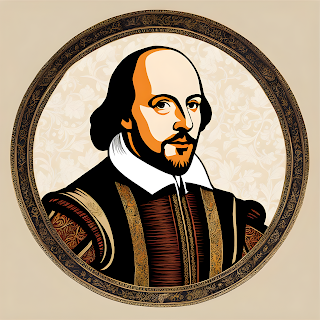
The Interplay of Nature, Animal, and Human Worlds in To Autumn by John Keats
John Keats’ To Autumn is a masterful celebration of the season, vividly portraying the interconnectedness of nature, animals, and human activity. In this ode, written in 1819, Keats captures the fullness and richness of autumn through an exquisite blend of imagery that integrates the natural environment, the behavior of animals, and the labors of humanity. The poem’s harmonious depiction of these elements not only showcases the beauty of the season but also subtly reflects deeper themes of growth, maturation, and the passage of time. Keats achieves this unity through careful attention to detail, personification, and a layered portrayal of the sensory experiences of autumn. By examining the ways in which Keats combines the natural, animal, and human worlds in To Autumn, one can see how he creates a balanced and interconnected vision of the season as a time of completion, fulfillment, and inevitable change.
The Fusion of Nature and Human Activity: The Harvest and Abundance
In the first stanza of To Autumn, Keats introduces the season as a time of ripeness and abundance, with nature working in harmony with human labor to bring the harvest to its peak. The stanza opens with an image of autumn as a “Season of mists and mellow fruitfulness,” highlighting the richness and productivity of the natural world. Keats personifies autumn as a close companion of the sun, working together to bring the natural world to a state of ripeness:
“Close bosom-friend of the maturing sun; / Conspiring with him how to load and bless / With fruit the vines that round the thatch-eves run.”
This image immediately establishes a sense of cooperation between the forces of nature and human presence. The vines encircling the thatched eaves—a distinctly human dwelling—indicate the merging of the cultivated and the wild, suggesting that humanity is part of the broader cycle of growth and harvest.
The stanza continues to describe the bountiful harvest:
“To bend with apples the moss’d cottage-trees, / And fill all fruit with ripeness to the core.”
Here, the poem integrates nature, animals, and human cultivation. The “moss’d cottage-trees” imply human habitation, while the natural world flourishes in tandem with it. The fruits, ripened “to the core,” signify both the culmination of nature’s processes and the preparation for human consumption. The depiction of “plump” hazel shells and swelling gourds not only appeals to the senses but also suggests a symbiotic relationship between humans and nature, as the harvest provides sustenance and fulfillment.
The Personification of Autumn: A Humanized Nature
Keats’ personification of autumn in the second stanza blurs the lines between the human and natural worlds, portraying the season as a figure actively engaged in the labor of the harvest. Autumn is depicted as a harvester, an image that evokes both human and natural elements:
“Thee sitting careless on a granary floor, / Thy hair soft-lifted by the winnowing wind; / Or on a half-reap’d furrow sound asleep, / Drows’d with the fume of poppies, while thy hook / Spares the next swath and all its twined flowers.”
In these lines, autumn is envisioned as a human-like figure participating in the agricultural process. The personification brings together the human activity of harvesting with the natural processes of growth and decay. The image of autumn sitting on a granary floor, with hair lifted by the wind, combines the animate and inanimate, illustrating how human labor is embedded in the seasonal rhythm.
Keats’ portrayal of autumn as a reaper and gleaner emphasizes the interdependence between humans and nature. The hook, traditionally used for cutting crops, is described as “careless” and “drows’d,” suggesting a sense of relaxation and ease in the labor, as if nature itself is resting after a period of intense activity. The blending of human tools and natural imagery—such as the “winnowing wind” and the “fume of poppies”—symbolizes the seamless integration of the human and natural worlds. The hook that “spares” the swath of flowers represents not just the work of harvesting, but also a moment of stillness, suggesting that even in the midst of productivity, there is space for nature’s beauty to persist.
The Animal World: The Chorus of Autumn
In the third stanza, Keats shifts from the visual richness of the harvest to the auditory landscape of autumn, bringing animals into the picture to complete the poem’s vision of the season. The stanza begins with the question, “Where are the songs of Spring? Ay, where are they?” The absence of spring’s liveliness is contrasted with the distinct sounds of autumn, which are filled with the activity of animals:
“Think not of them, thou hast thy music too,— / While barred clouds bloom the soft-dying day, / And touch the stubble-plains with rosy hue; / Then in a wailful choir the small gnats mourn / Among the river sallows, borne aloft / Or sinking as the light wind lives or dies.”
Here, the music of autumn is characterized by the “wailful choir” of gnats, which creates a somber yet serene atmosphere. The gnats’ song is part of the natural world’s response to the end of the growing season, highlighting the delicate balance between life and death. The fading light of the day and the “soft-dying” sounds of the gnats evoke the transition from life to rest, from vibrancy to dormancy.
Keats then introduces other animals:
“Hedge-crickets sing; and now with treble soft / The red-breast whistles from a garden-croft; / And gathering swallows twitter in the skies.”
These creatures are part of autumn’s closing act, preparing for the coming winter. The swallows, gathering to migrate, signify movement and change, while the robin’s song and the crickets’ chirps suggest continuity and presence. By incorporating the animal world into the seasonal landscape, Keats creates a living, dynamic environment where each element—whether plant, animal, or human—plays a role in the grand cycle of life.
The Unity of Nature, Animals, and Humans: A Holistic Vision
Keats’ craftsmanship in To Autumn lies in his ability to weave together the natural, animal, and human worlds into a seamless whole. Rather than presenting these elements as separate or isolated, he portrays them as interconnected and mutually dependent. The ripening fruits, the harvest labor, and the songs of the animals are all part of the same seasonal process, reflecting the harmony and unity that characterize autumn.
This integration is not just a celebration of the season’s beauty but also a meditation on life’s cycles. The poem suggests that humans are not separate from nature, but participants in its rhythms. The harvest, while driven by human effort, is also a natural process, as is the migration of swallows or the buzzing of gnats. Keats’ depiction of autumn emphasizes balance and wholeness, where every action and every creature, whether human or animal, contributes to the overall experience of the season.
Conclusion
In To Autumn, John Keats masterfully combines the natural world, the behavior of animals, and human activity to create a vivid and harmonious portrayal of the season. The poem’s imagery and personification blur the boundaries between these elements, presenting autumn as a time when nature, animals, and humans coexist in a state of balance and fulfillment. Keats’ attention to detail and his ability to capture the richness of sensory experience make To Autumn not just a description of a season, but a profound reflection on the interconnectedness of all living things. By intertwining the natural, animal, and human worlds, Keats offers a holistic vision of autumn as a time of completion, unity, and acceptance of life’s cyclical nature.

